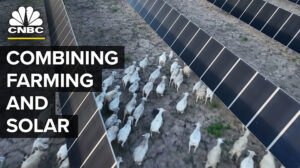
When you make purchases through our links we may earn a small commission.

Photo Credit: Zoran Zonde Stojanovski
Put It On Your Wall: CanvasOnDemand.com
Support thesmokingchair.com through Patreon.
Global warming, driven by the relentless increase in greenhouse gas emissions, has far-reaching consequences that extend beyond environmental concerns. While rising temperatures, extreme weather events, and sea-level rise are well-documented aspects of climate change, the economic ramifications are equally significant. One often-overlooked aspect is the indirect impact of global warming on inflation and the subsequent burden it places on taxpayers.
Extreme Weather Events and Agricultural Disruptions
One of the most immediate and tangible consequences of global warming is the increase in frequency and intensity of extreme weather events. Hurricanes, droughts, floods, and wildfires disrupt agricultural production, leading to crop failures and reduced yields. These disruptions create a domino effect throughout the supply chain, from farmers to food processors to distributors, ultimately impacting consumers.
Rising Energy Costs
Global warming is intrinsically linked to the burning of fossil fuels, a major contributor to the greenhouse gas emissions responsible for climate change. As nations grapple with the need to transition to cleaner energy sources, the costs associated with this transition can lead to increased energy prices. Higher energy costs affect various industries, raising production expenses and, consequently, the prices of goods and services.
Infrastructure Damage and Repair Costs
The intensification of extreme weather events also takes a toll on infrastructure, including roads, bridges, and utilities. Hurricanes, for example, can cause widespread destruction, necessitating costly repairs and reconstruction. Governments, funded by taxpayer dollars, are left with the responsibility of addressing these infrastructure challenges, diverting funds that could be allocated elsewhere.
Health-Related Costs
Global warming contributes to the spread of infectious diseases, exacerbates air pollution, and increases the frequency of heatwaves. The resultant health issues place an additional burden on healthcare systems, increasing the demand for medical services and resources. As a consequence, taxpayers bear the brunt of heightened healthcare costs, including increased insurance premiums and public healthcare expenditures.
Insurance Premiums and Payouts
The escalating frequency and severity of climate-related disasters force insurance companies to adjust their risk assessments. This often translates to higher premiums for individuals and businesses located in vulnerable areas. Additionally, insurance payouts resulting from climate-related damages contribute to the financial strain on insurers, potentially prompting them to pass on the costs to policyholders.
Government Response and Adaptation Costs
Governments worldwide are compelled to allocate resources to mitigate and adapt to the impacts of global warming. This includes investments in infrastructure resilience, disaster response capabilities, and the development of sustainable practices. These initiatives require significant financial commitments, which are funded primarily through taxation.
The Last Word
Global warming’s implications extend far beyond the environmental realm, seeping into the economic and financial fabric of societies. The indirect consequences of climate change, such as agricultural disruptions, rising energy costs, infrastructure damage, health-related expenses, insurance adjustments, and government response efforts, collectively contribute to inflation and, consequently, place a heavier burden on taxpayers. Recognizing and addressing these interconnections is crucial for devising effective strategies to mitigate the economic fallout of climate change and build a more resilient and sustainable future.
You’ll get more articles like this – and our favorite promotional offers delivered straight to your inbox.
By submitting this form you agree to our terms and conditions. You can unsubscribe at any time.

Why Oil Giants Shell And BP Are Investing In U.S. Farmland


Jim Cramer conjures market magic with Oz The Mentalist

Holiday LINGERIE try on! SHEIN | Sophie Annaston





























